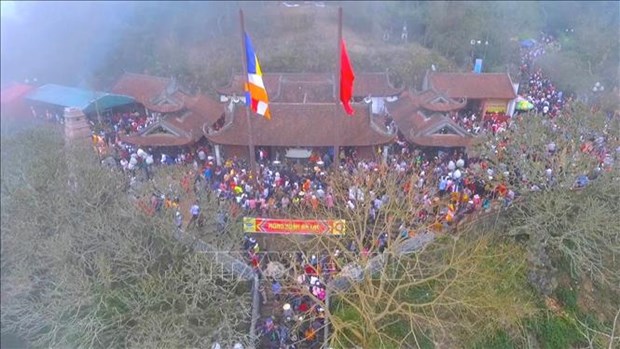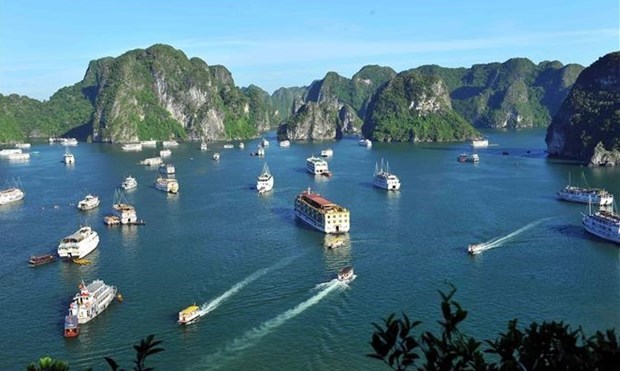Quang Ninh aims to host some 10 million tourists in 2022
 Tourists crowd Quang Ninh's Yen Tu scenic site on Tet (Photo: VNA)
Tourists crowd Quang Ninh's Yen Tu scenic site on Tet (Photo: VNA)
According to Hanh, the province boasts the highest rate of people getting third COVID-19 vaccine shots in Vietnam as well as a safe, flexible, and effective adaptation to the pandemic.
Via communications campaigns, the development of new products, including night-time economic activities, and the organisation of large-scale tourism, sport, and cultural events, the province’s tourism recovery programme this year targets a full restoration of all activities and products; and safety for tourists.
Hanh informed that in February and March, the local authorities will work with big travel companies and competent agencies of such key tourist markets as Hanoi and Ho Chi Minh City.
Quang Ninh welcomed over 300,000 holidaymakers in the six-day Lunar New Year (Tet) holiday from January 31 to February 5, earning around 400 billion VND (17.6 million USD). Local religious establishments such as Yen Tu relic site, Ba Vang, Ngoa Van and Cai Bau pagodas, and Cua Ong temple, together with Ha Long Bay – a UNESCO-recognised World Heritage Site, were the most attractive to tourists during the period.
From January 1 to June 30, Quang Ninh offers a 50-percent discount of tickets to many destinations like the Yen Tu scenic site, Ha Long Bay, and the province’s museum and library.
The provincial Department of Tourism has completed a draft plan called “Green-lane tourism” to revive the local COVID-19-stricken tourism.
 Ha Long Bay, a world natural heritage site (Photo: VNA)
Ha Long Bay, a world natural heritage site (Photo: VNA)On Vietnam’s northern coast, Quang Ninh is building a community-based tourism development project that aims to welcome 1.7 million domestic tourists and 1.1 million international holidaymakers by 2025, with the local tourism sector earning 5.9 trillion VND (254.5 million USD) in revenue.
By 2030 it is to welcome 3 million domestic visitors and 1.8 million foreigners, with revenue reaching 12.1 trillion VND.
Community-based tourism is expected to generate 4,200 jobs by 2025 and 9,500 by 2030.
Quang Ninh is endowed with natural advantages for sea and island tourism. It has a coastline of more than 250 kilometres and more than 2,000 islands and islets which account for two-thirds of the total number in Vietnam.
It is home to popular destinations such as Ha Long Bay, Bai Tu Long, Ha Long Bay National Park and some islands.
In particular, Ha Long Bay literally “descending dragon” bay, was twice recognised as a World Natural Heritage site by UNESCO in 1994 and 2000. The bay spans 1,553 square kilometres and includes 1,969 islands of various sizes. It features thousands of limestone karsts and islets in various shapes and sizes. The limestone in the bay has gone through 500 million years of formation in different conditions and environments. The geo-diversity of the environment has created biodiversity, including a tropical evergreen biosystem, oceanic and sea biosystem.
In 2018, Ha Long Bay made it into the top 15 Instagrammed global cruise destinations based on a survey of 1.8 million posts tagged on various ships and ports by travel cruise site SeaHub.
In 2019, British travel magazine Rough Guides included Vietnam’s Ha Long Bay in its selection of the 100 most beautiful places to visit next year. It describes “the scattering of limestone pinnacles jutting out of the smooth waters of Ha Long Bay”, around four hours east of Hanoi capital, as an “incredible sight”.
Most recently in 2020, Ha Long Bay was named amongst the 50 most beautiful natural wonders on Earth selected by US-based magazine Insider./.












